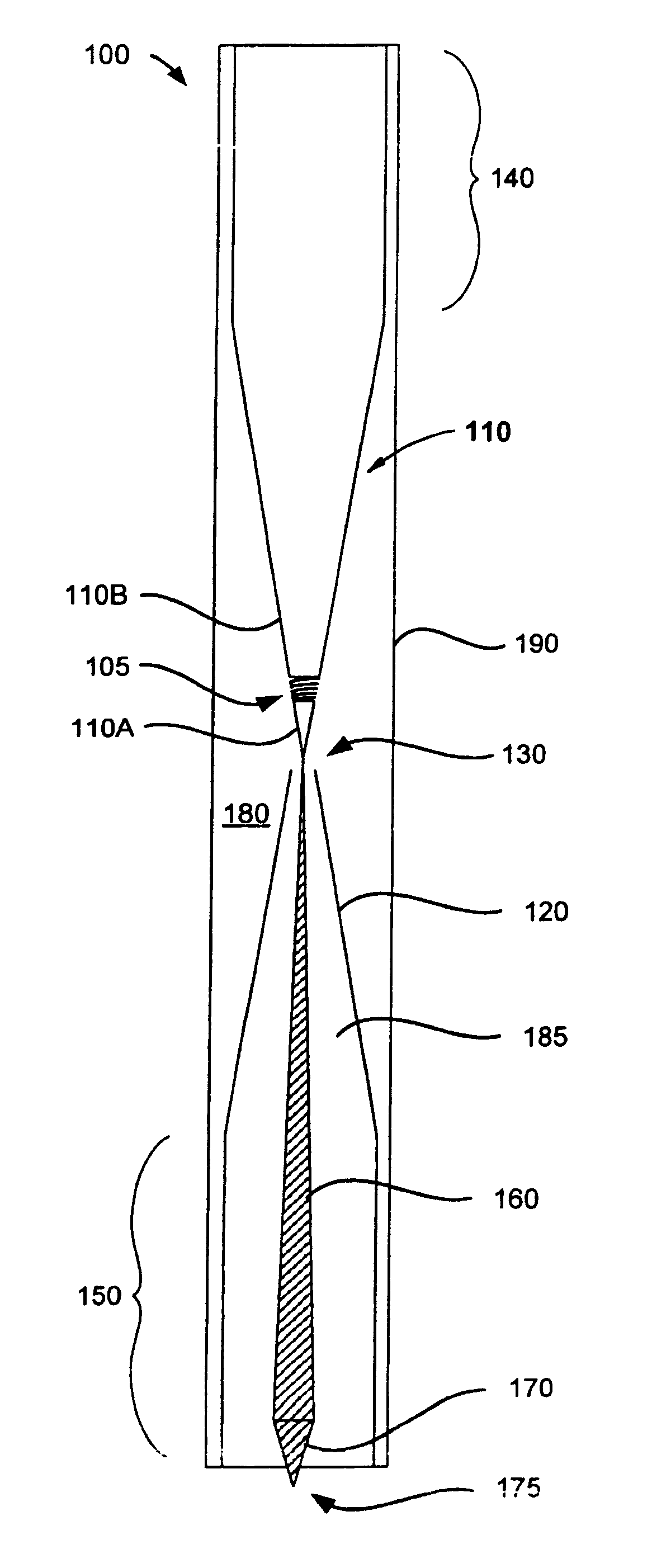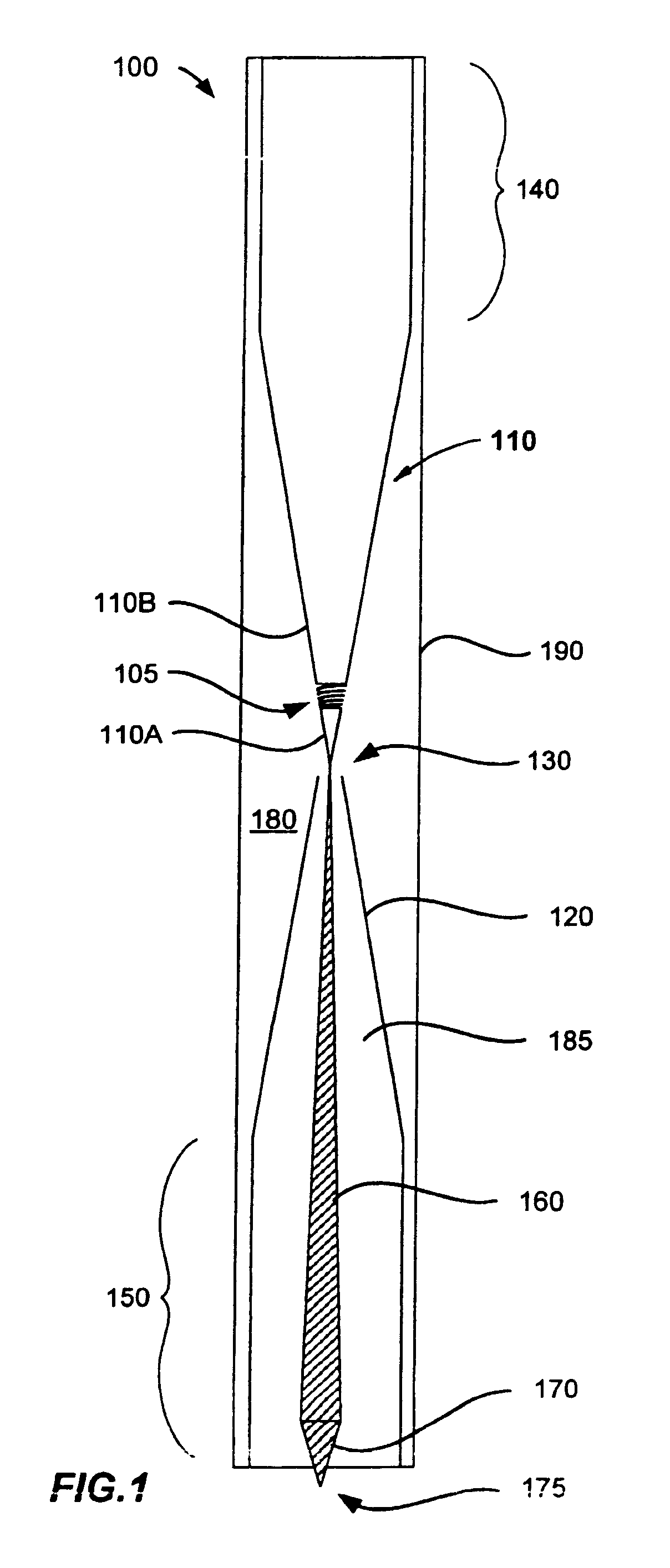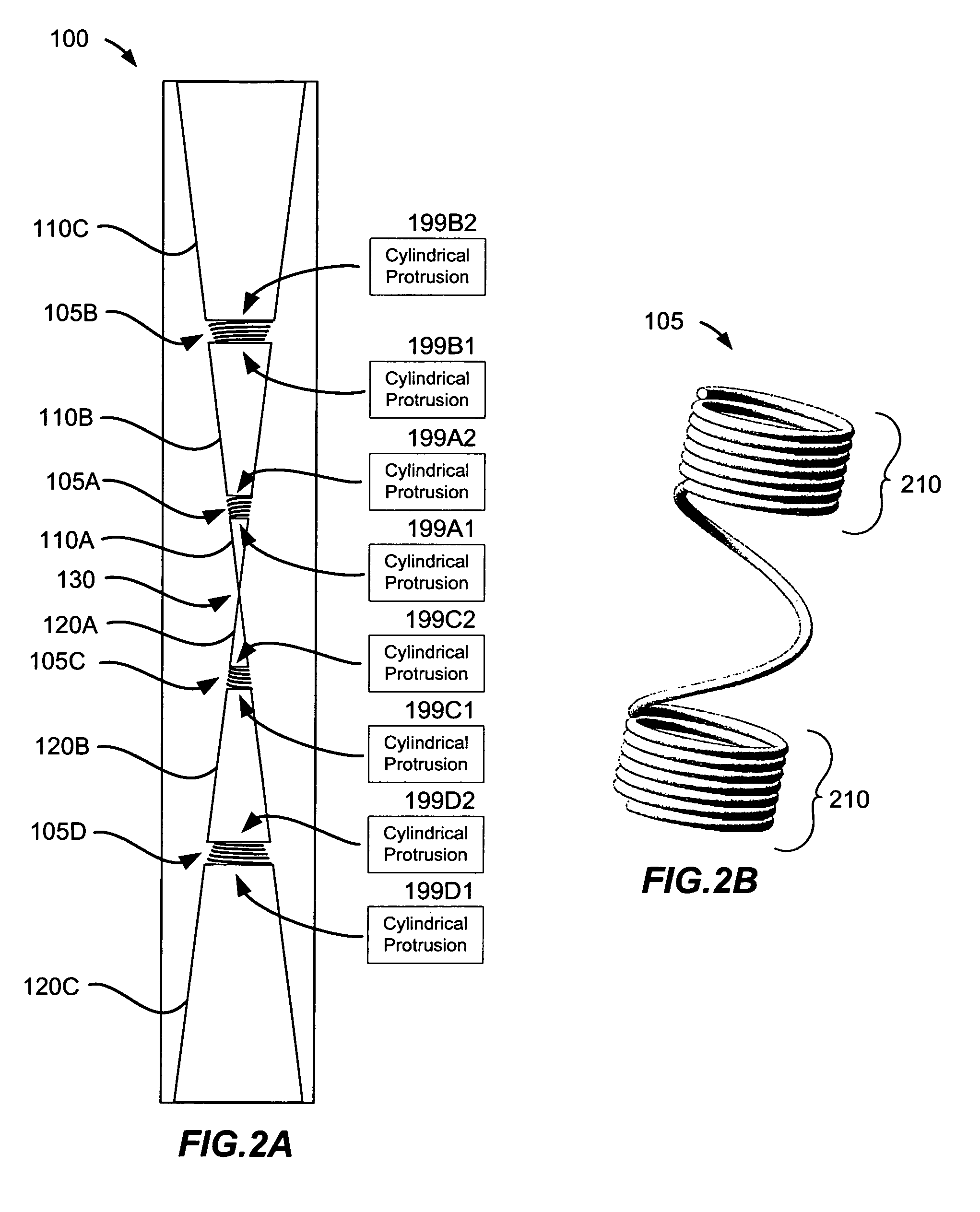Frequency control of electrical length for bicone antennas
a technology of bicone antenna and electrical length, which is applied in the direction of antennas, electrical equipment, antenna feed intermediates, etc., can solve the problems of limited low-end operating frequency range and general less effective radiation pattern, and achieve the effect of reducing aperture size and high input impedan
- Summary
- Abstract
- Description
- Claims
- Application Information
AI Technical Summary
Benefits of technology
Problems solved by technology
Method used
Image
Examples
Embodiment Construction
[0021]The present invention supports the design and operation of a bicone antenna with frequency selective control of the electrical length of the antenna. Such control can allow the antenna to exhibit two or more different electrical lengths where each length depends upon the operating frequencies of the signals. Simultaneous operation of the bicone antenna at varied electrical lengths for varied signal frequencies can provide for improved broadband performance of the antenna. That is, the bicone can provide a single aperture antenna with improved performance characteristics at two or more varied frequency bands.
[0022]The bicone antenna may comprise a reduced aperture size achieved by reducing the cone angle. This reduction in cone angle can increase the impedance of the cones thus providing a high impedance bicone antenna system. In recognition of this high impedance characteristic, an impedance matching mechanism can be used to interface with the bicone antenna system. An exempla...
PUM
 Login to View More
Login to View More Abstract
Description
Claims
Application Information
 Login to View More
Login to View More - R&D
- Intellectual Property
- Life Sciences
- Materials
- Tech Scout
- Unparalleled Data Quality
- Higher Quality Content
- 60% Fewer Hallucinations
Browse by: Latest US Patents, China's latest patents, Technical Efficacy Thesaurus, Application Domain, Technology Topic, Popular Technical Reports.
© 2025 PatSnap. All rights reserved.Legal|Privacy policy|Modern Slavery Act Transparency Statement|Sitemap|About US| Contact US: help@patsnap.com



